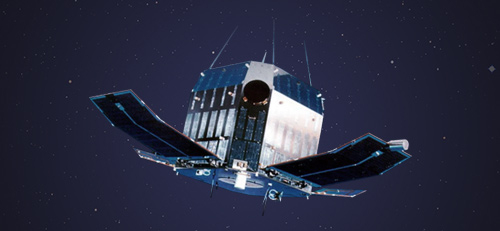| Name (pre-launch in parentheses) | HINOTORI (ASTRO-A) |
|---|---|
| International Designation code | 1981-017A |
| Objectives | Observation of 2D data in hard X-ray of solar flares, solar particle rays, X-ray bursts, etc. |
| Launch Date | 09:30, February 21, 1981 (JST) |
| Launch Location | Kagoshima Space Center (Uchinoura) |
| Launch Vehicle | M-3S-2 |
| Weight | 188kg |
| Shape | Octagonal cylinder, 92.8 cm long from face to face, 81.5 cm high Equipped with four solar-array paddles |
| Orbital Altitude | Perigee 576 km, Apogee 644 km |
| Orbital Inclination | 31° |
| Type of orbit | Near-circular |
| Orbital Period | 97 min |
| Scientific Instruments | 1.Solar flare X-ray imager (SXT) 2.Solar soft X-ray bright line spectrum analyzer (SOX) 3.Solar soft X-ray monitor (HXM) 4.Solar flare monitor (FLM) 5.Solar gamma ray monitor (SGR) 6.Particle ray monitor (PXM) 7.Plasma electron density measurement instrument (IMP) 8.Plasma electron temperature measurement instrument (TEL) |
| End of Operation | July 11, 1991 |
| Reentered Date | July 11, 1991 |
| Results | In addition to its own mission, HINOTORI also provided observational data to the international project on the maximum period of solar activity. On the first day after the start of normal operation, it observed a large solar flare and, a month later, succeeded in observing 41 flares of many sizes. With the satellite’s X-ray observations, we were able to discover several new facts including high-temperature phenomena reaching up to 50 million °C and clouds of light-speed electrons floating in coronas |



